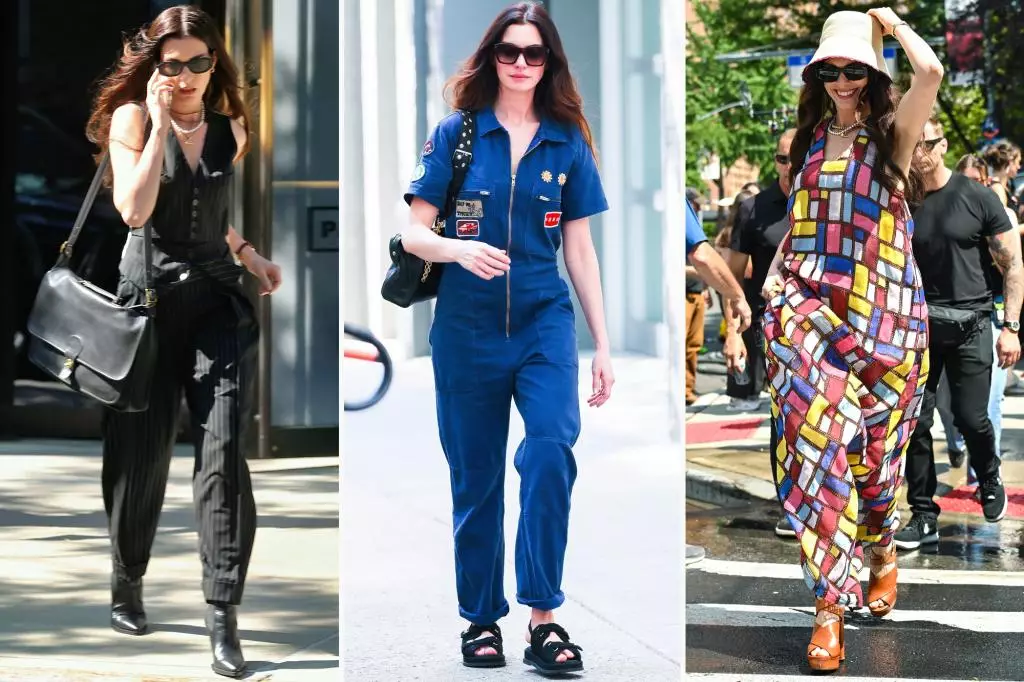As the filming of “The Devil Wears Prada 2” begins in New York City, fashion aficionados are already buzzing about how this sequel will redefine or reinforce the iconic style legacy established by the 2006 original. Despite the time gap, it’s evident that the sequel aims not just to entertain but to serve a visual feast that elevates fashion to a narrative centrality. The returning cast—Anne Hathaway, Meryl Streep, Emily Blunt, and Stanley Tucci—suggests that the film will maintain its character-driven depth while allowing a fresh infusion of new talent like Justin Theroux and Rachel Bloom, hinting at new stylistic directions. The real star of this production, however, appears to be the wardrobe, which continues to reflect the glitz and grit of the fashion industry. Whether or not Patricia Field, the original costume queen behind the film’s iconic looks, returns, the glimpses we’ve seen suggest an extravaganza that will impress and inspire. This sequel’s costume choices will likely be more than mere outfit selection—they seem poised to become an essential chapter in the film’s storytelling.
Fashion as a Statement of Identity and Power
The outfits captured on set reveal a daring blend of high luxury and streetwear practicality—an evolution, perhaps, of the fashion landscape since the original film debuted. For example, Anne Hathaway’s character, Andy Sachs, emerges as an even more discerning, style-conscious figure. From her luxurious jewelry, such as the beaded Marlo Laz choker and the Jemma Wynn toggle necklace, to her vibrant patchwork Gabriela Hearst maxi dress, each piece signals a statement beyond simple aesthetics. These accessories don’t just adorn but elevate her character’s transformation, symbolizing confidence, independence, and success. Andy’s choice to swap Prada’s signature thigh-high boots for Chanel dad sandals over a casual ensemble epitomizes her journey from corporate subordinate to self-assured woman who values comfort without sacrificing style.
This diversification reflects contemporary fashion’s complex identity—merging opulence with practicality. Her accessories, ranging from a Fendi basket bag to Bulgari’s diamond-studded ring, showcase an aspirational, yet accessible, reflection of modern luxury. Meanwhile, Miranda Priestly’s vintage pinstriped vest and trouser combo reminds us that style is timeless, and power dressing can transcend decades—yet still, it’s reinterpreted through a new lens.
Fashion as a Cultural Signal in a Changing World
In this era, where fashion is increasingly a form of personal expression and social commentary, the accessories and outfits from set hint at a broader cultural dialogue. Andy’s chic yet approachable look, complete with tailored denim and luxury jewelry, captures the tension between individualism and societal expectations. It’s a bold reminder that fashion isn’t merely surface-level; it’s a mirror reflecting one’s ambitions, personality, and status.
Moreover, the film’s emphasis on high-end brands and detailed styling signals a reaffirmation of fashion’s power to communicate authority and influence. The attention to detail—from a Shebobo sun hat to designer sunglasses—underscores an understanding that every accessory, every fabric, plays a role in storytelling. It’s provocative to consider whether this sequel will challenge or uphold the glamorized view of fashion presented in the first film. Given the wardrobe glimpses so far, it is clear that style—and by extension, personal agency—is at the heart of this narrative. It’s a bold affirmation that fashion remains a potent, transformative force, capable of shaping identities and narratives alike, even in the most cutthroat corridors of power.

